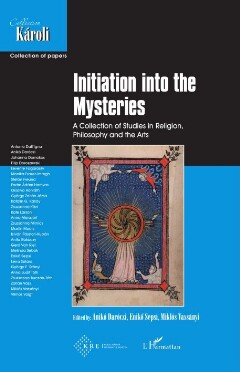

OCR
THEATRICAL APPROACHES TO MYSTERY: “KENOSIS” IN VALERE NOVARINA S WORKS Acting poorly and acting non-acting are characteristic of Tadeusz Kantor’s Zero Theater, but they can also be seen as part of the heritage of Indian and Chinese cultures (Bhagavad-Gita and Taoism). THE “KENOTIC” THEATRE OF VALERE NOVARINA AND TALKING WITH ANGELS While writing this paper, I read Talking with Angels, first published in France with the title Dialogues avec l’Ange. The work is the transcription of spiritual instructions received by four Hungarian friends over a period of 17 months during the Second World War, from June 1943 to November 1944. Gitta Mallasz, Lili Strauss, Joseph Kreutzer, and Hanna Dallos held weekly meetings on Friday afternoons. During these meetings, over the course of 88 conversations, Hanna Dallos transmitted voices which, she said, did not emanate from her, but rather from four distinctly different personalities or entities. They were transcribed word for word by Gitta Mallasz and Lili Strausz. Ihree of the four were Jews who perished during deportation. The only survivor, Mallasz, who took refuge in France in 1960, spent years translating these conversations into French. The first edition was published in 1976, followed by a second, complete edition in 1990. The original Hungarian notes were published in the first decade of the twenty-first century. The most recent edition was published in 2010 by Fekete Sas. It is entitled Az angyal valaszol. (Ihe first editions were preceded by a samizdat in the 1990s by the Reverend Farkas Jézsef of the Reformed Church.) While reading the book, I realized that some of the themes are profoundly related to Novarina’s work, as is the case with writings by several other mystic authors and philosophers. I have already analysed the affinities of thought between Novarina’s work and the ideas of Simone Weil.'° However, the analogies with Talking with Angels came as a surprise to me. After having drafted the essential points of this paper, I conversed with Valére Novarina about the books in question. Eventually, he wrote to me and informed me that he had read the book and it is the “livre de chevet” (bedside reading) of his principal actor, Claire Sermonne, in Le Vivier des noms. 10 Poésie sans « je » dans l’espace: le théâtre de Valère Novarina et de Janos Pilinszky, in Jézsef Fülöp — Zsuzsanna Mirnics, Miklös Vassanyi — Gabriella Szilvia Kuhn (eds.), KapcsolatbanIstennel és emberrel: Pszichológiai és bölcsészeti tanulmányok (Getting Connected— with God and Man. Papers in Psychology and Philology), Budapest, KRE — LHarmattan, Károli Könyvek, 2014, 361-371. * 309 « Daréczi-Sepsi-Vassänyi_Initiation_155x240.indb 309 6 2020.06.15. 11:04:25
Szerkezeti
Custom
Image Metadata
- Kép szélessége
- 2074 px
- Kép magassága
- 3078 px
- Képfelbontás
- 300 px/inch
- Kép eredeti mérete
- 1.15 MB
- Permalinkből jpg
- 022_000071/0310.jpg
- Permalinkből OCR
- 022_000071/0310.ocr
Bejelentkezés
Magyarhu
